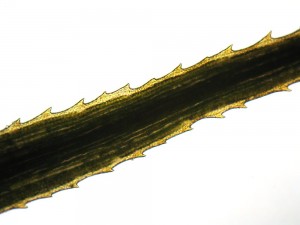Habitat
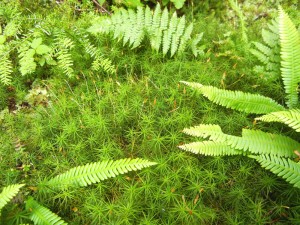 Polytrichastrum alpinum can be found on soil banks, in cliff crevices, on overturned tree roots, rotten logs, and on floors of coniferous forests.
Polytrichastrum alpinum can be found on soil banks, in cliff crevices, on overturned tree roots, rotten logs, and on floors of coniferous forests.
Gametophyte
Overall structure:
 This species is an acrocarpous moss. It forms loose, dark green turfs that attach to the substratum by rhizoids at the base of its shoots.
This species is an acrocarpous moss. It forms loose, dark green turfs that attach to the substratum by rhizoids at the base of its shoots.
A distinguishing feature of this species is the reduced leaves near the base of the stems.
Leaf structure:
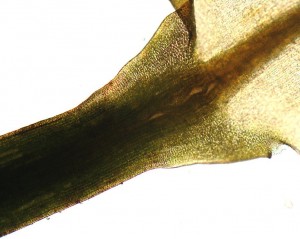 The leaves of Polytrichastrum alpinum are linear-lanceolate shape, with abruptly broadened bases that sheathe the stem.
The leaves of Polytrichastrum alpinum are linear-lanceolate shape, with abruptly broadened bases that sheathe the stem.
The upper margins of the leaves are toothed, as seen from this ventral view of a leaf. The lamellae are visible as parallel longitudinal lines occupying much the lamina surface.
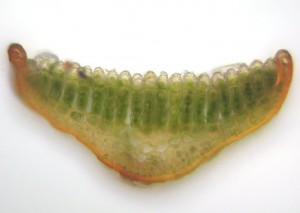 A leaf cross section provides another view of the lamellae.
A leaf cross section provides another view of the lamellae.
 The marginal cells of the lamellae in Polytrichastrum alpinum are papillose.
The marginal cells of the lamellae in Polytrichastrum alpinum are papillose.
Male Gametophyte:
 Pictured here are male gametophytes with antheridial splash cups which aid in the dispersal of sperm.
Pictured here are male gametophytes with antheridial splash cups which aid in the dispersal of sperm.
Sporophyte
Sporangium:
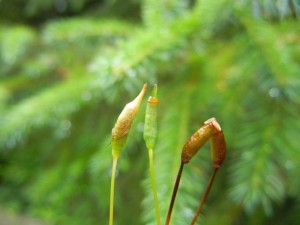 The sporangia of Polytrichastrum alpinum are pale green when young and turn brown with age. They are long, cylindrical, erect and often slightly curved. They are rounded in cross-section. Note the presence of a hairy calyptra on the young sporangium.
The sporangia of Polytrichastrum alpinum are pale green when young and turn brown with age. They are long, cylindrical, erect and often slightly curved. They are rounded in cross-section. Note the presence of a hairy calyptra on the young sporangium.
Seta:
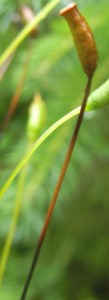 The seta can be quite long and is light brown to straw-colored when it reaches maturity.
The seta can be quite long and is light brown to straw-colored when it reaches maturity.

